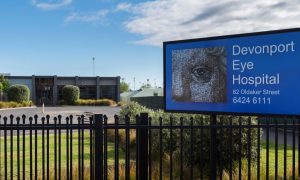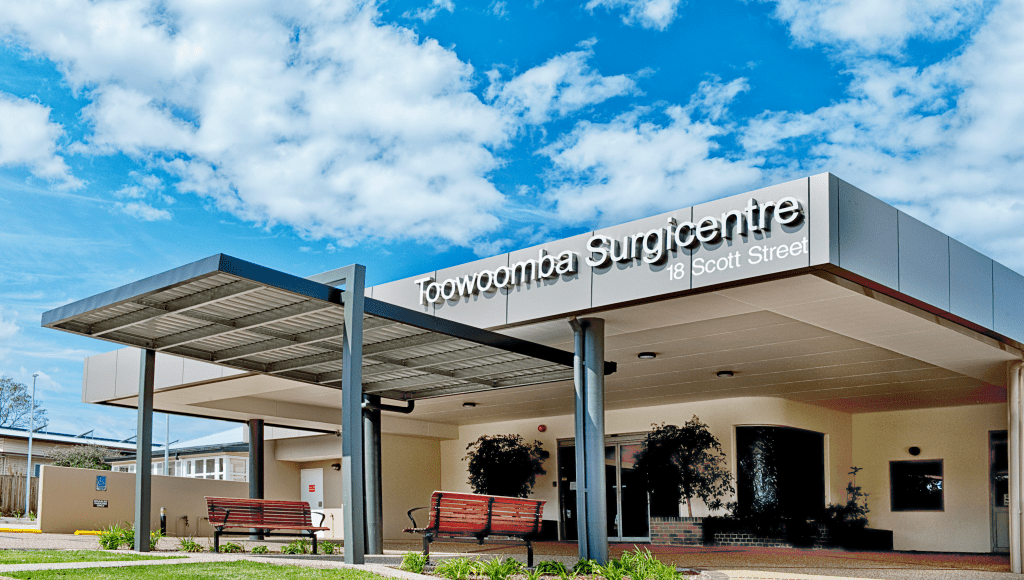Welcome to Toowoomba Surgicentre
Toowoomba Surgicentre provides a comprehensive suite of surgical services across a broad range of specialities. Toowoomba Surgicentre has earned a reputation for safe and efficient delivery of high-quality patient care by its friendly, welcoming staff. The Clinical Team keeps abreast of advances in both technology and current trends in patient care via ongoing professional development.

- Patient Information
- Find a Doctor
- Patient Feedback
- Australian Charter of Healthcare Rights
- Patient Safety and Quality
- Governance
- Online admissions
- Our Procedures
Adenoidectomy is a surgical procedure performed to remove the adenoids (a mass of lymphoid tissue located behind the nasal passages).
A tonsillectomy is a surgical procedure in which the tonsils are removed from either side of the throat.
In chronic cases of otitis media with effusions present for months, surgery is sometimes performed to insert a grommet, called a “tympanostomy tube” into the eardrum to allow air to pass through into the middle ear, and release any pressure build up and help clear excess fluid within.
A Colonoscopy is an examination of the colon (large intestine) using a long, thin, flexible tube with a camera called a colonoscope.
A gastroscopy is an examination of the upper digestive tract (the oesophagus, the stomach and duodenum) using a long, thin, flexible tube with a camera called a gastroscope.
A hysteroscopy is the procedure in which a thin, lighted tube is used to examine the inside of the uterus and cervix. Hysteroscopy can be used in the diagnosis and treatment of several conditions such as abnormal bleeding, polyps or tumours inside the uterus, and adhesions.
Also known as ‘key-hole’ surgery, a laparoscopy is the procedure in which a laparoscope containing a fibre-optic camera and/or surgical heads is inserted through a small incision in the abdomen. Some of the many problems which can be diagnosed or treated by laparoscopy are infertility, reproductive problems, ectopic pregnancy, urinary disease and liver and pancreas cancer.
IVF was originally developed to treat women with irreparably damaged Fallopian tubes. It allows those stages of conception which usually occur in the tubes – oocyte (egg) collection, fertilization and early embryo development – to be performed in the laboratory i.e. in vitro. It is now widely used to treat most forms of infertility including endometriosis, male infertility, immunological infertility, and idiopathic or unexplained infertility.
A blepharoplasty is a procedure which removes excess or sagging skin from upper and/or lower eyelids. The surgery is usually performed for cosmetic reasons however; it can improve sight in patients whose eyelids are obscuring their vision.
A canthoplasty is a surgical procedure that tightens the area around the eye in order to correct a drooping appearance, and create an upward slant in the outer corner of the eye.
A chalazion is a lump on the eyelid that is usually caused by obstruction of the drainage duct of an oil gland within the upper or lower eyelid. Surgical removal of chalazion may become necessary if vision becomes obscured, or an astigmatism.
A Dacryocystorhinostomy (DCR) is an operation performed to unblock the nasolacrimal duct (tear duct).
Ectropion is a medical condition where the eyelid folds outward. Corrective surgery involves the removal of a small piece of the fold to tighten the muscles in the area.
Entropion is a medical condition where the eyelid folds inward. Corrective surgery involves the removal of a small piece of the fold to tighten the muscles in the area.
Cataract surgery is the surgical replacement of a cloudy lens with an artificial intraocular lens (IOL) implant to restore vision. The cloudy lens is broken up and removed with an ultrasound probe through a very small incision in the eye, and the artificial lens is inserted.
Intravitreal injections are used in the treatment of Age-Related Macular Degeneration. The Injections work by inhibiting the growth of abnormal blood vessels at the macula, and help to prevent leakage of these blood vessels.
Pneumatic Retinopexy is a procedure in which retinal detachment is treated through the injection of a gas bubble.
Squint surgery involves tightening the extraocular eye muscles to change the eye position in order to correct a turned eye.
Vitrectomy is a surgery which removes the vitreous gel from the eye to assist in the repair of retinal detachments, macular holes and retinal membrane surgeries.
An arthroscopy is a procedure in which an endoscope is inserted in a joint through a small excision in order to diagnose and treat a number of conditions. An arthroscopy can be performed on a knee, shoulder, wrist or ankle.
Endoscopic carpal tunnel release surgery is the use of an endoscope to cut the transverse carpal ligament. The endoscope is usually inserted through a small incision in the palm.
Carpal tunnel release is a surgery used to treat carpal tunnel syndrome. During the surgery, the surgeon will cut the carpal ligament to relieve pressure on the median nerve, and make more space for the nerve and tendons.
Dupuytren’s contracture is the development of a fibrous connection between the finger tendons and the skin of the palm resulting in a forward curvature or ‘clawing’ of one or more fingers. Treatment for Dupuytren’s contracture includes needling, injections and surgical procedures to sever the tissue causing the contracture.
Breast augmentation is the surgical increase of the size of woman’s breasts, usually through the use of breast implants.
An excision of melanoma procedure is the surgical removal of melanoma (a form of skin cancer).
A lipectomy refers to any surgical procedure carried out to remove excess body fat. The most common of which is liposuction (a surgical procedure which suctions out excess fat).
Otoplasty, also known as ear correction surgery or ‘ear pinning’, is performed to move prominent or protruding ears closer to the head. It is done using permanent sutures to hold the ears in place.
A cystoscopy is a procedure in which a thin flexible tube with a camera and light on the end is inserted through the urethra and into the bladder. The procedure is most commonly undertaken to investigate the bladder for any abnormalities.
A TRUS biopsy is a procedure where a tissue sample of the prostate gland is taken via a rectal ultrasound probe.
A vasectomy is a surgical procedure that sterilises a man by cutting the vas deferens, which are tubes that carry sperm from the testes to the penis.
Contact Details
Opening Hours: 7:00am to 5:00pm, Monday to Friday. Our friendly personnel are always ready to assist with your enquiries.
Tel: (07) 4659 3100
Contact Person: Nathan Eckersley, CEO/Director of Nursing [email protected]
Address: 18 Scott Street TOOWOOMBA Qld 4350
- Follow Toowoomba Surgicentre on social






